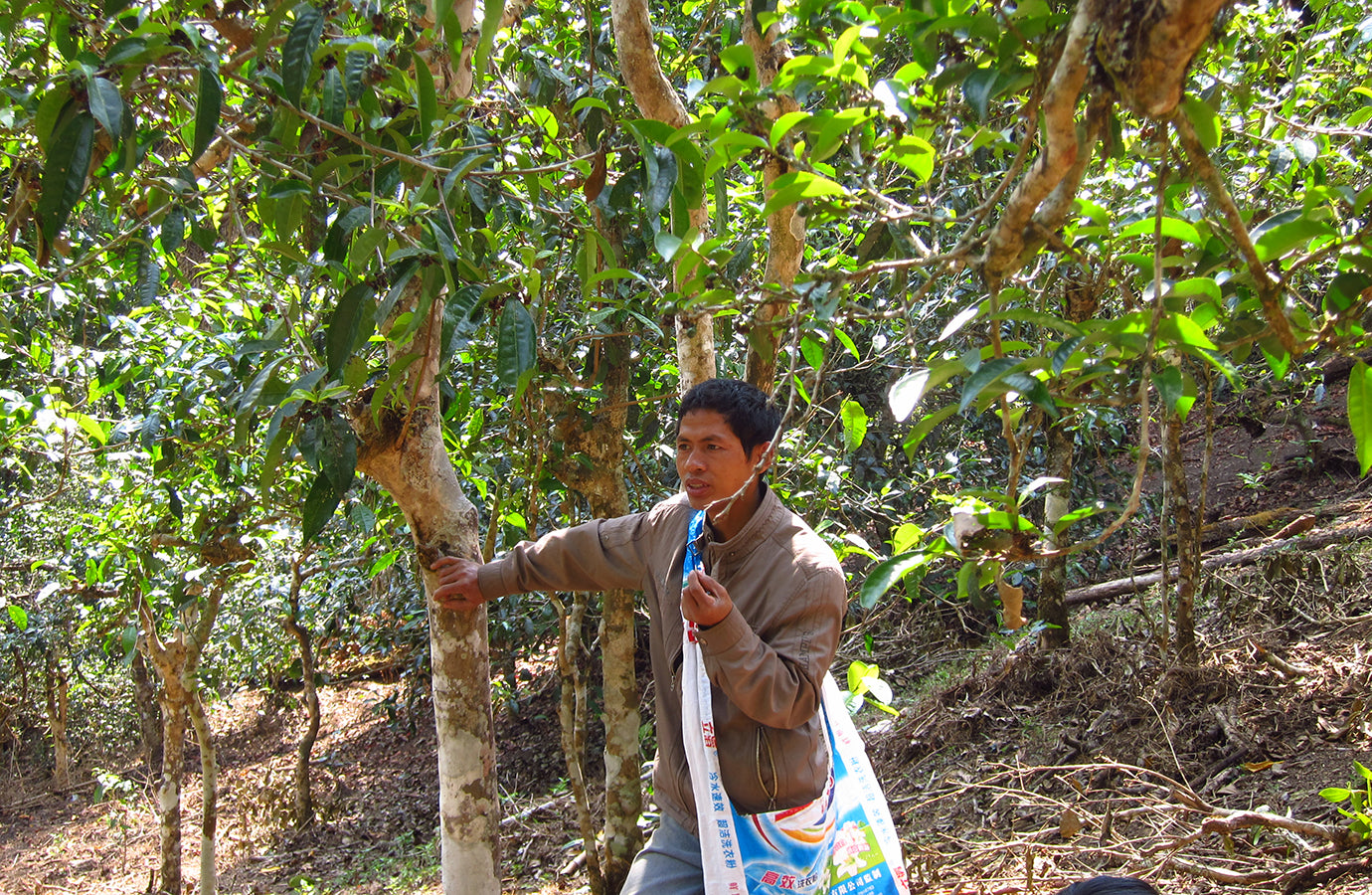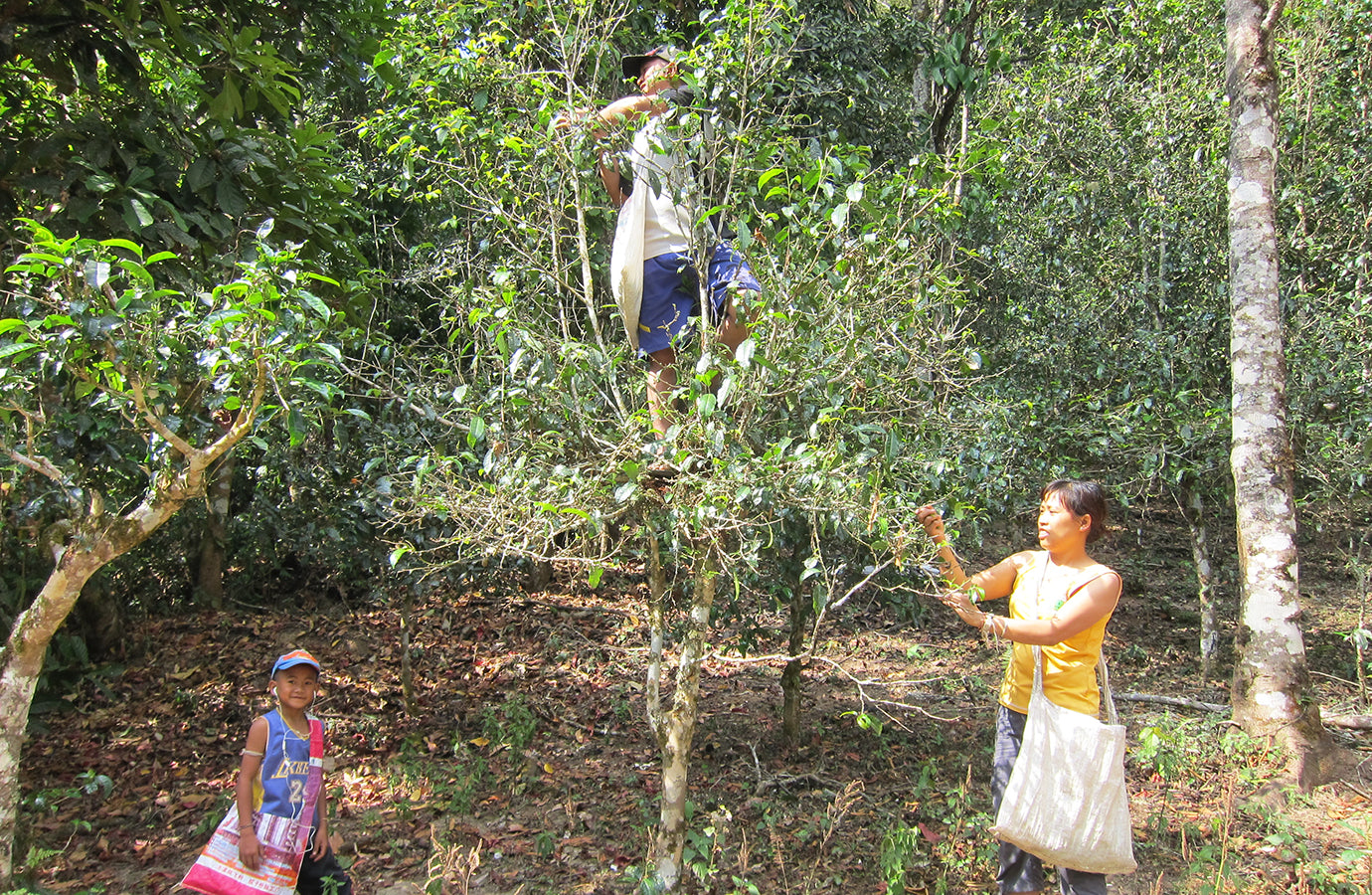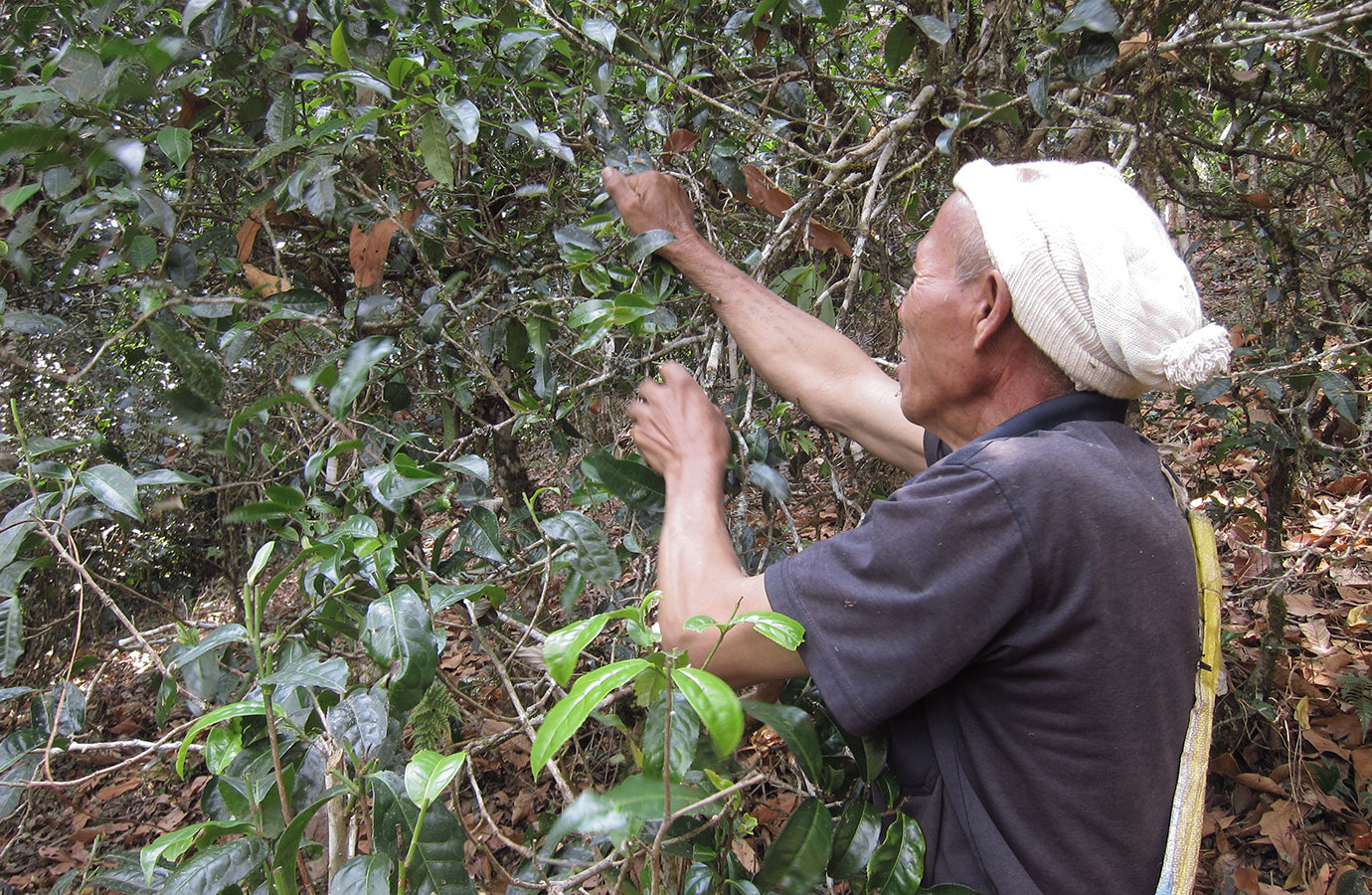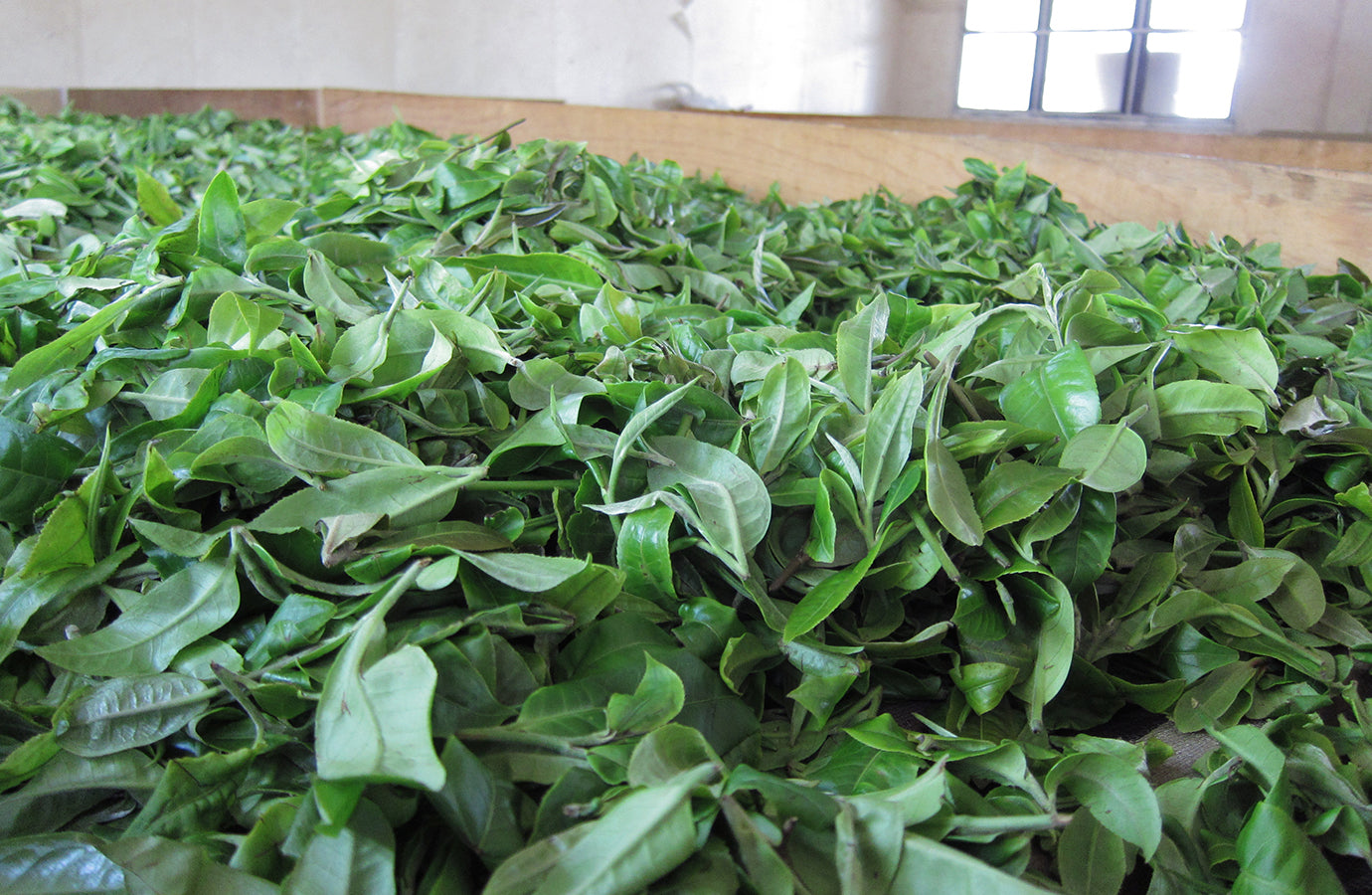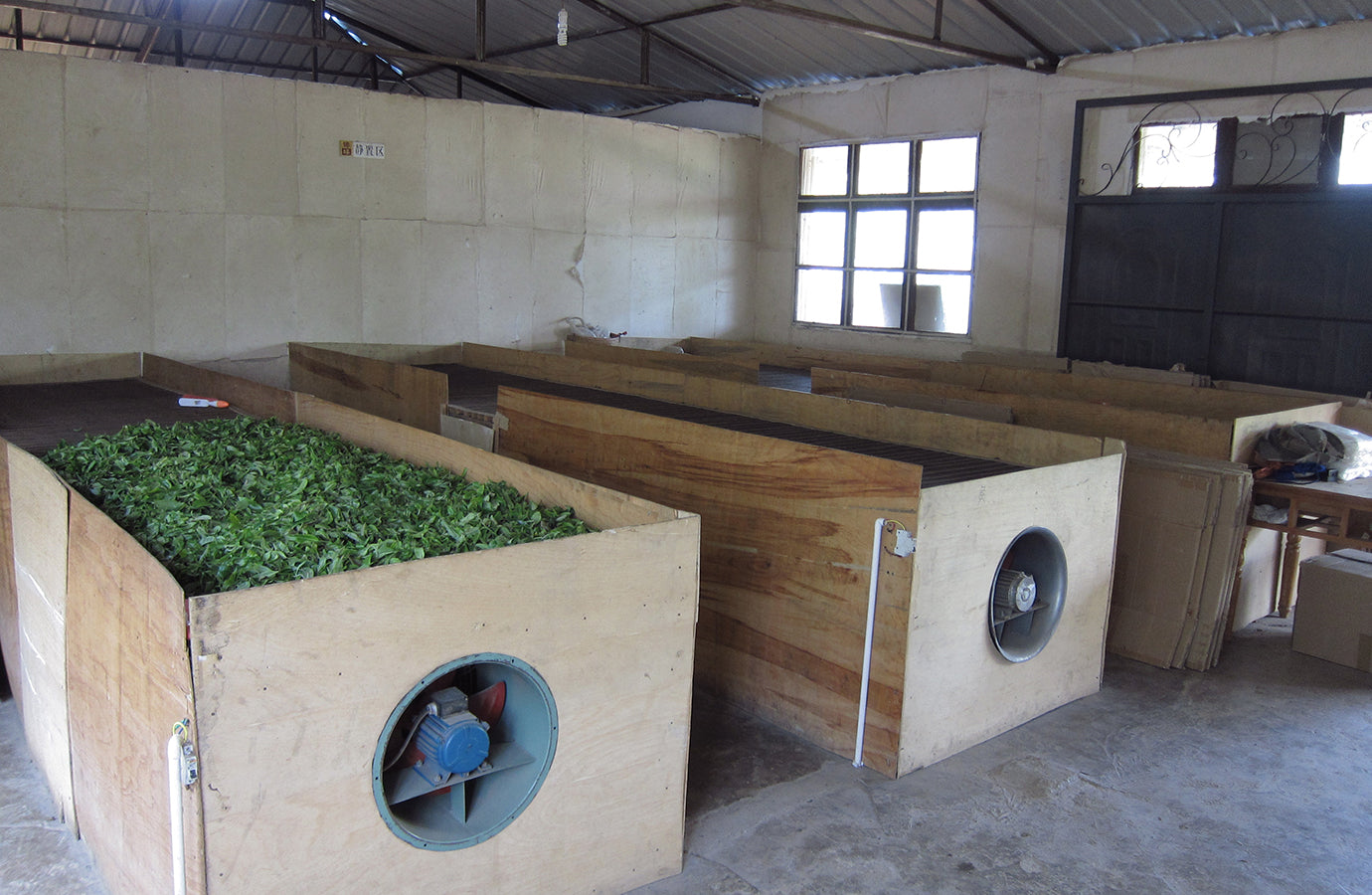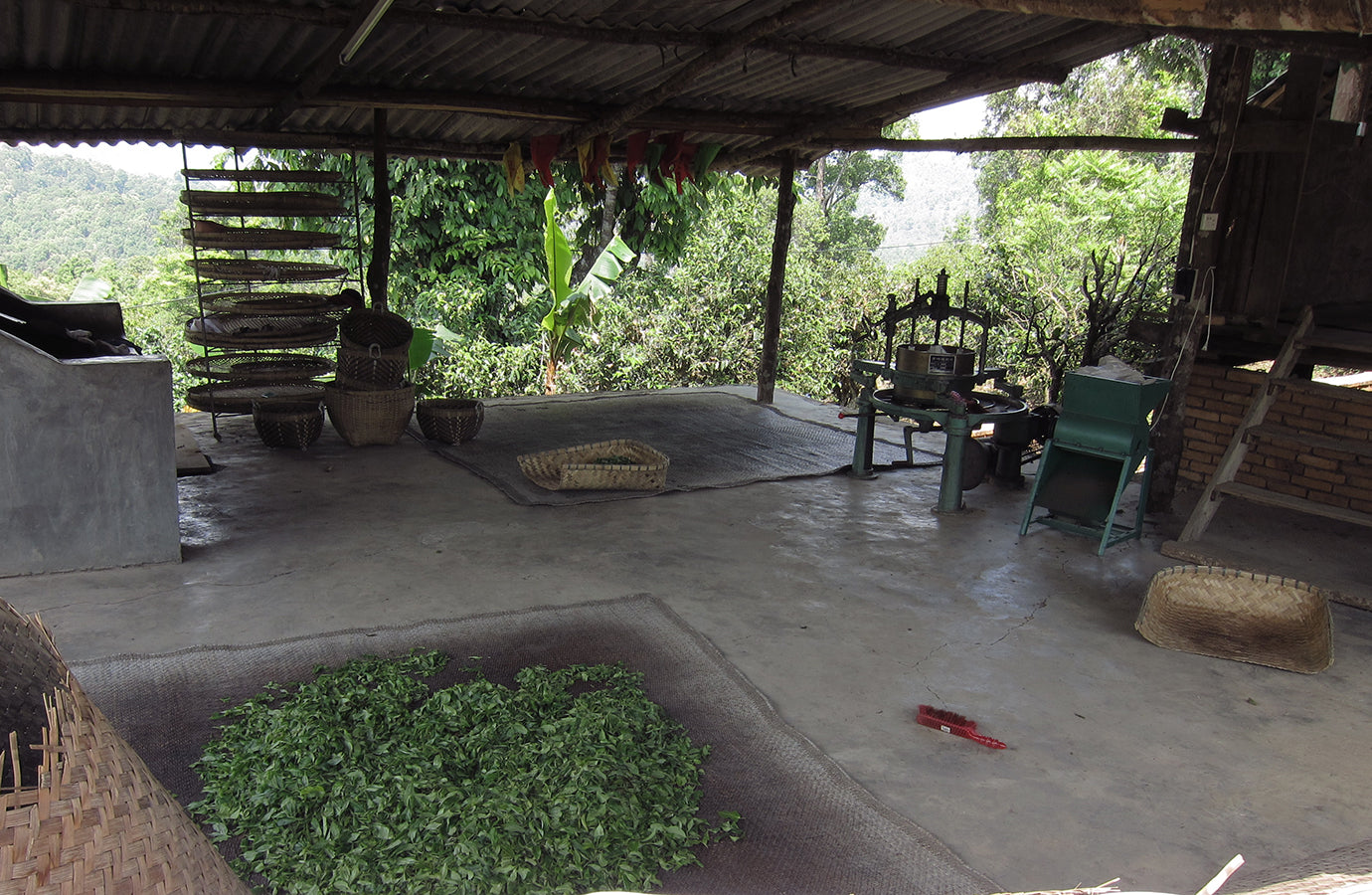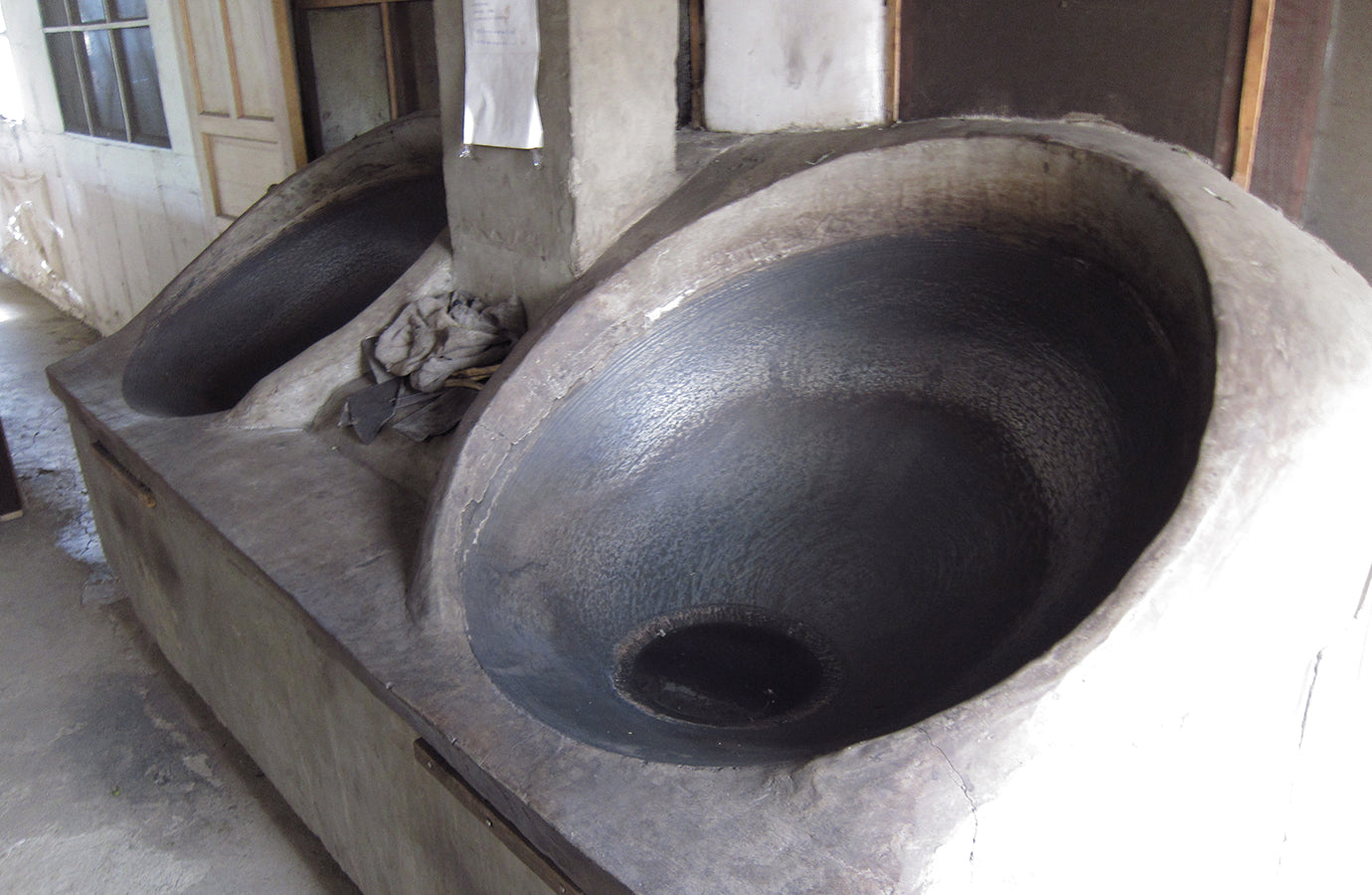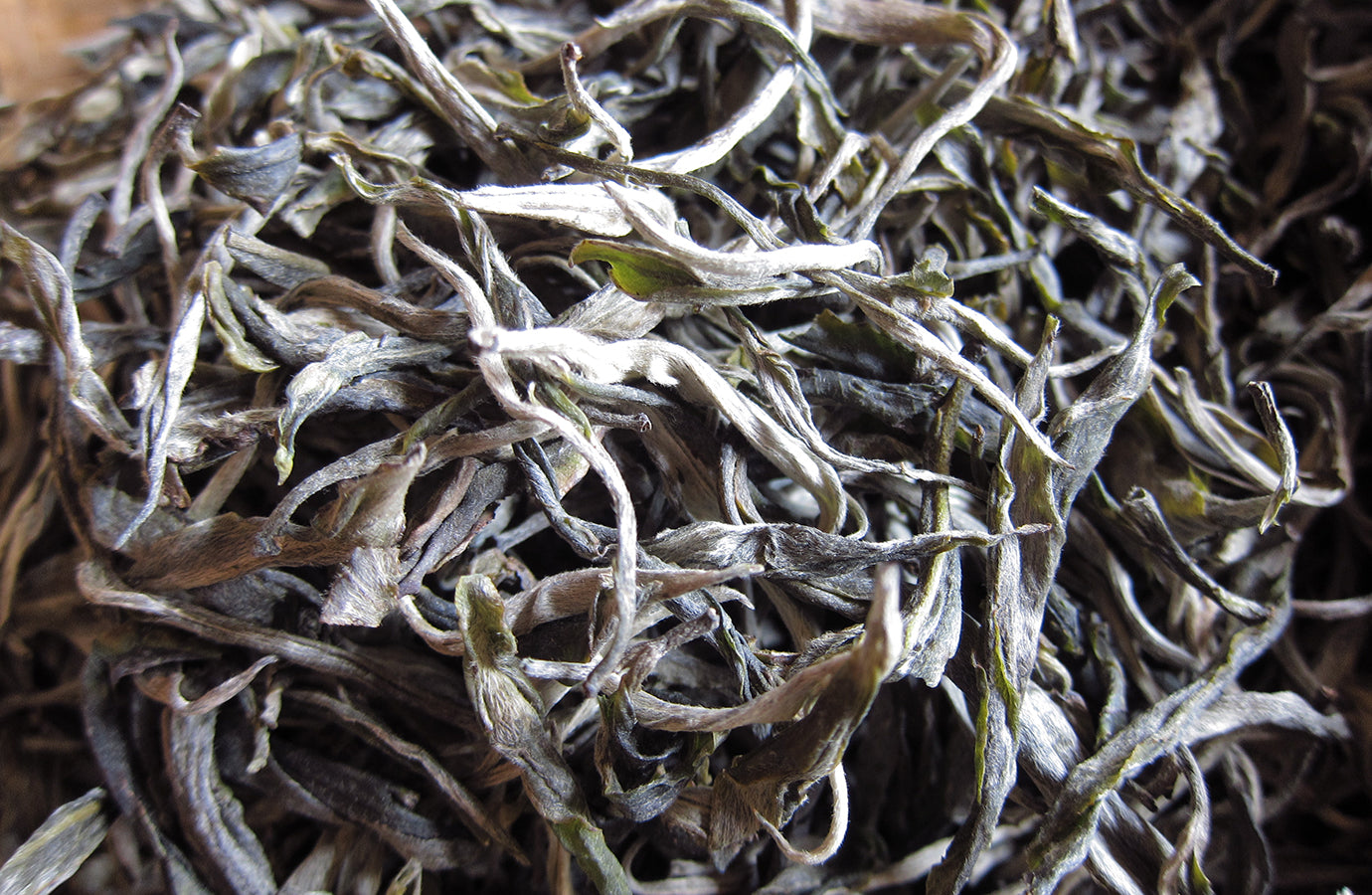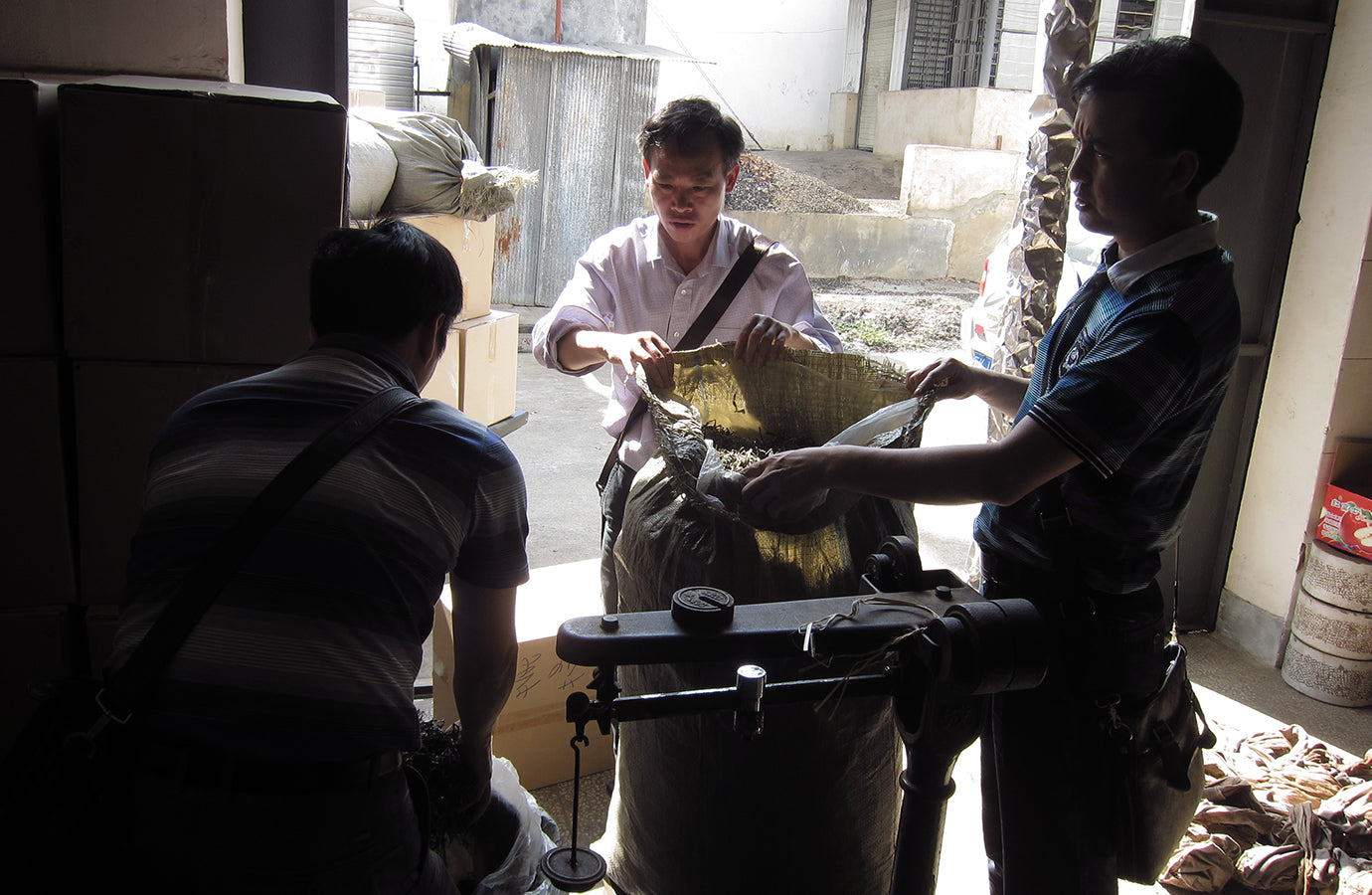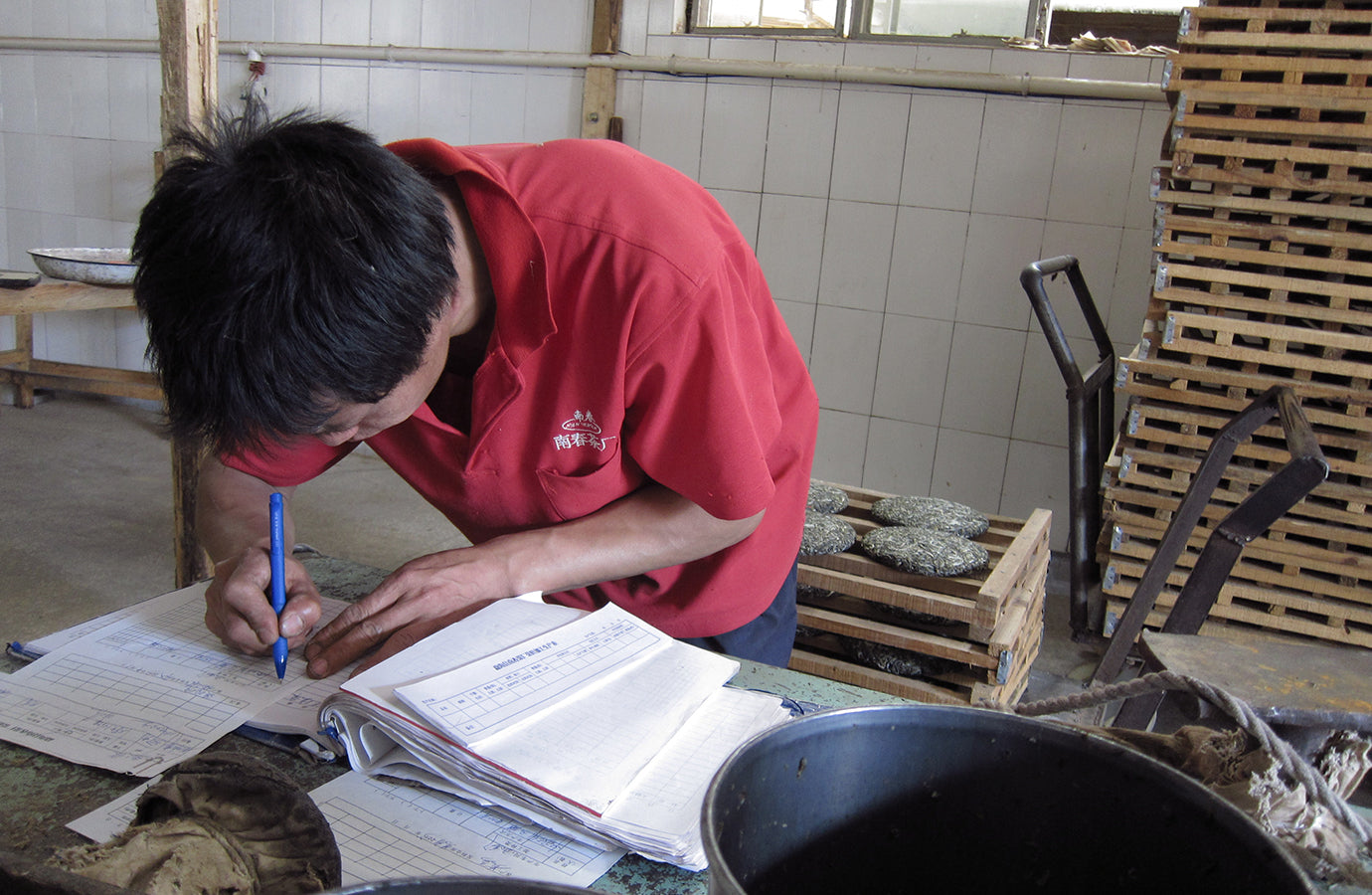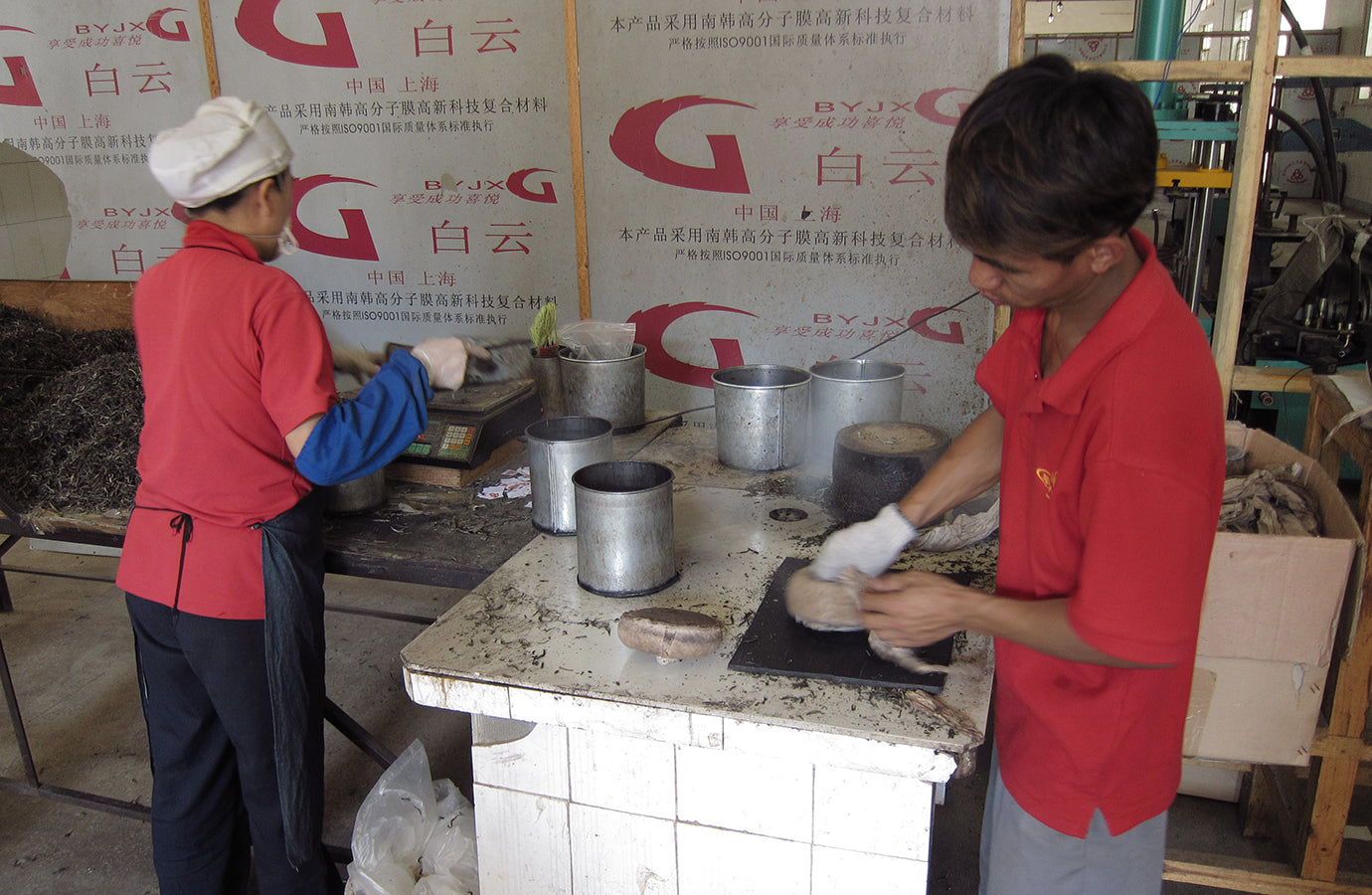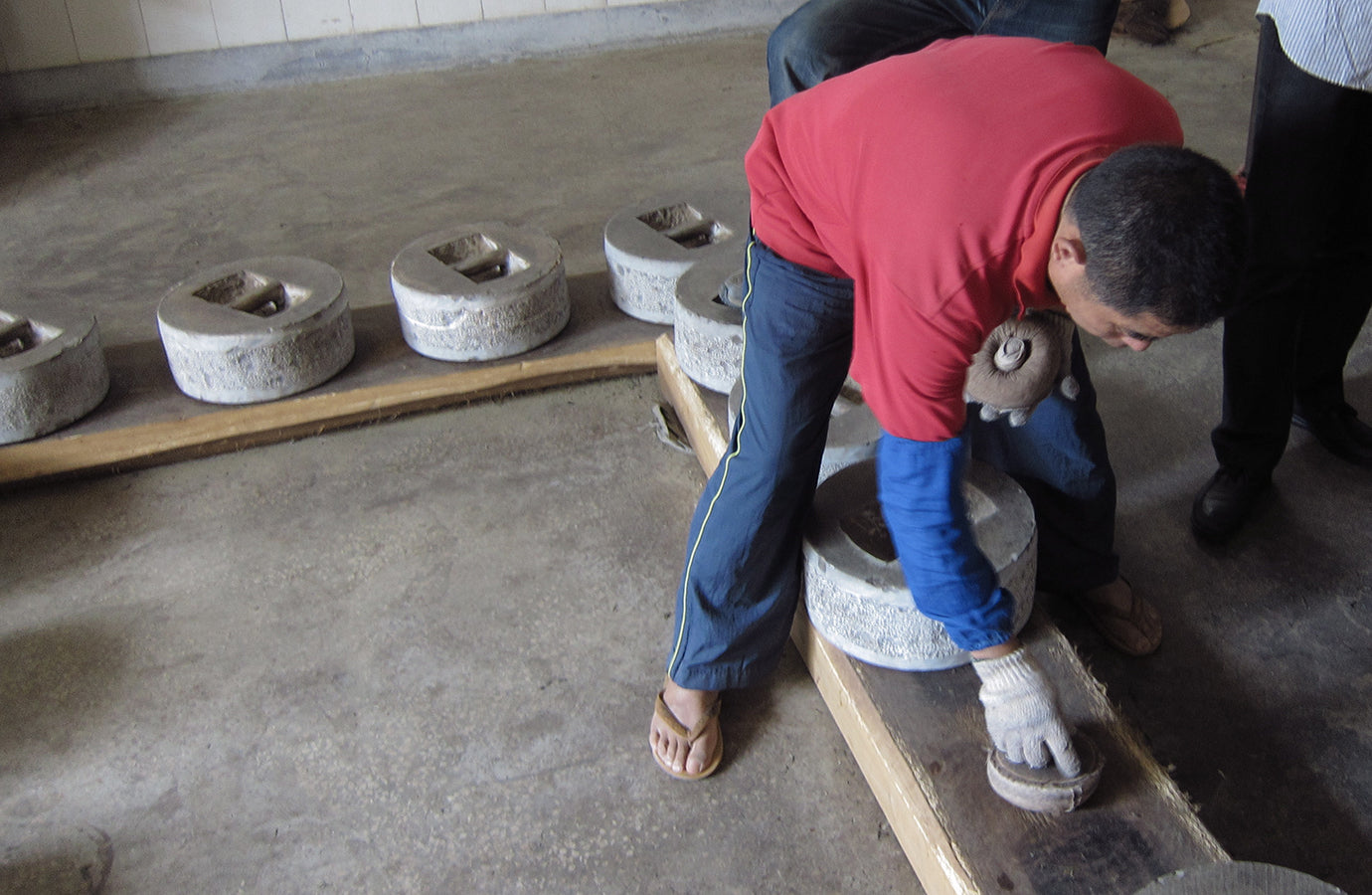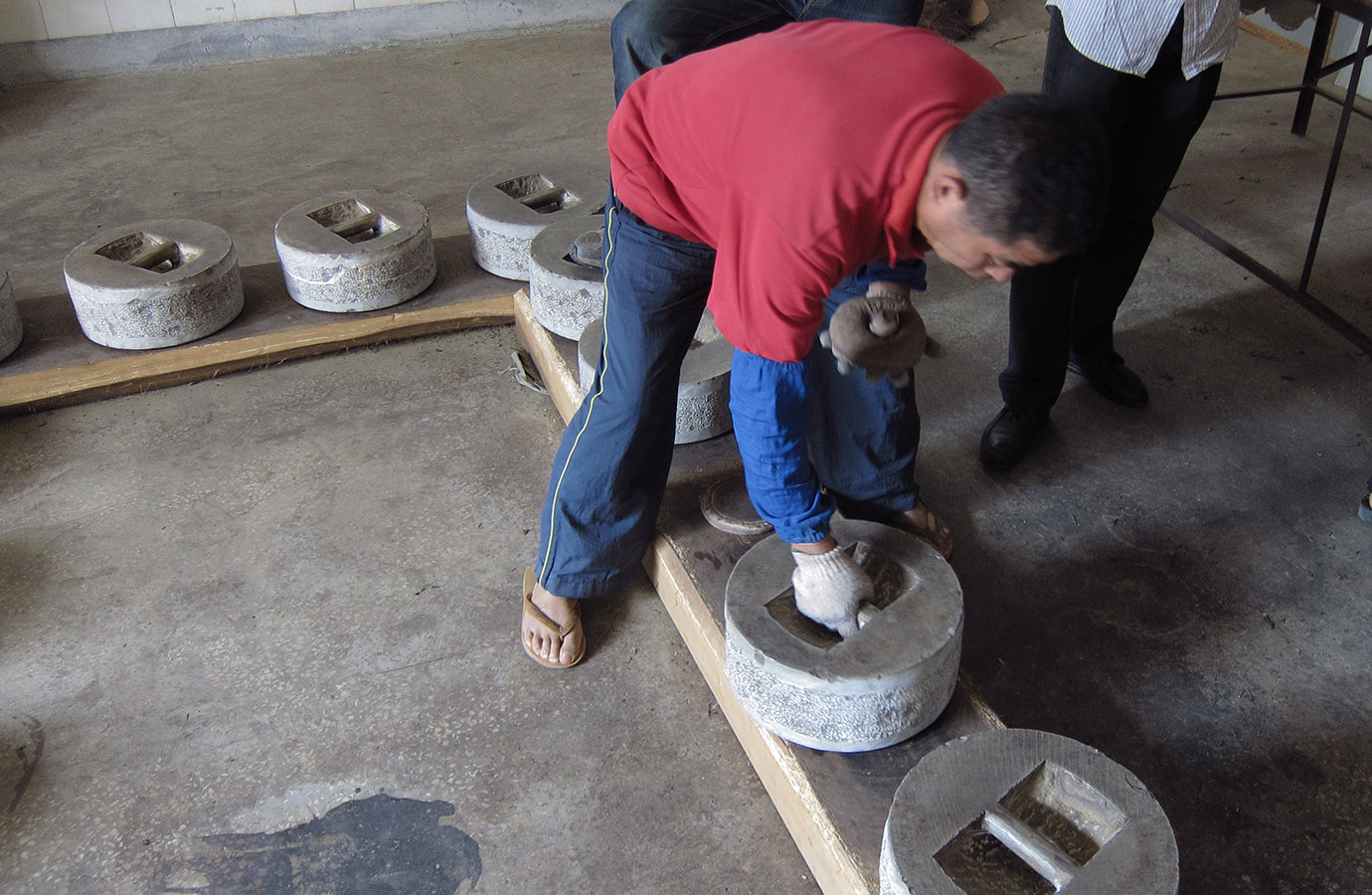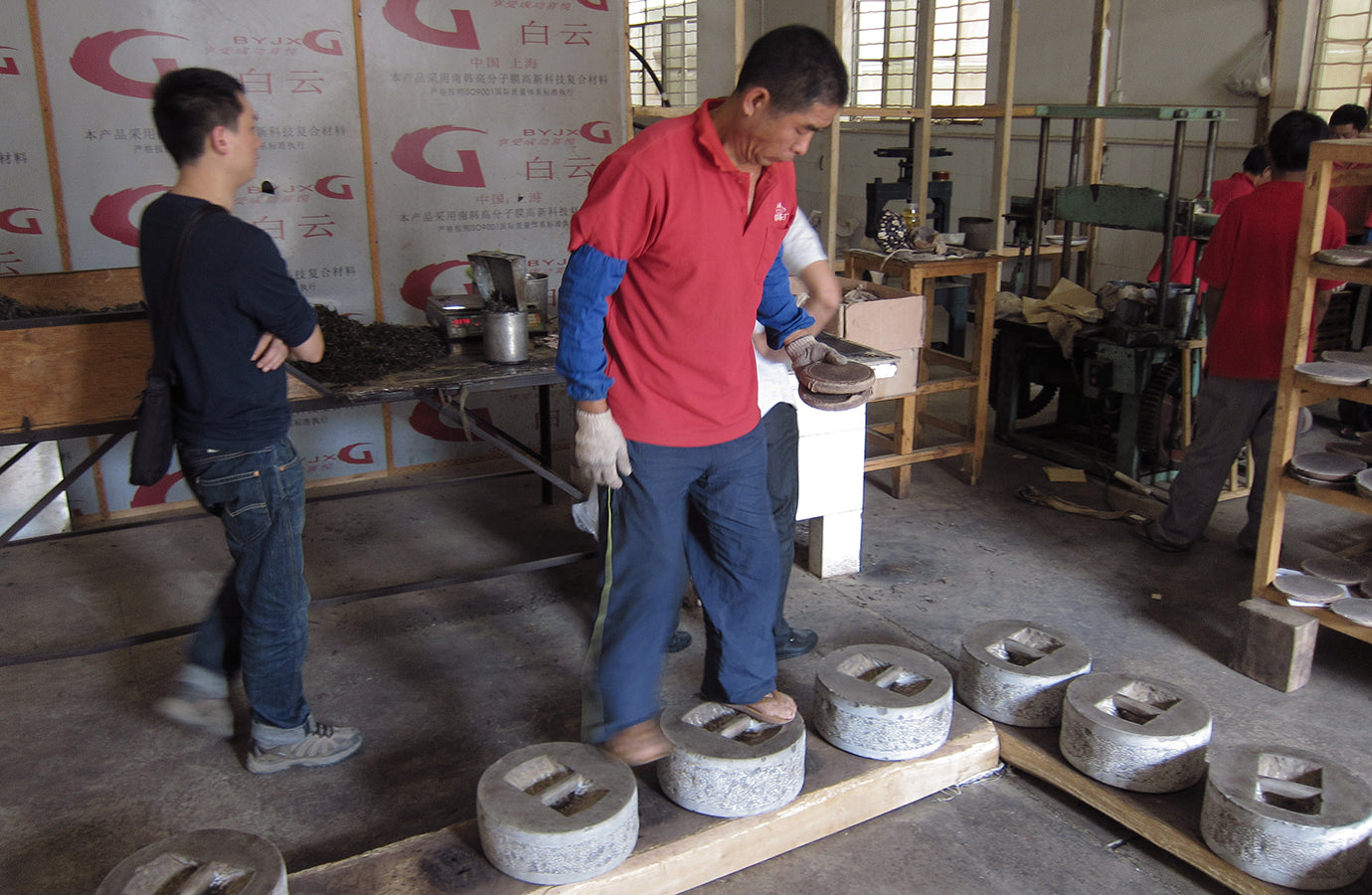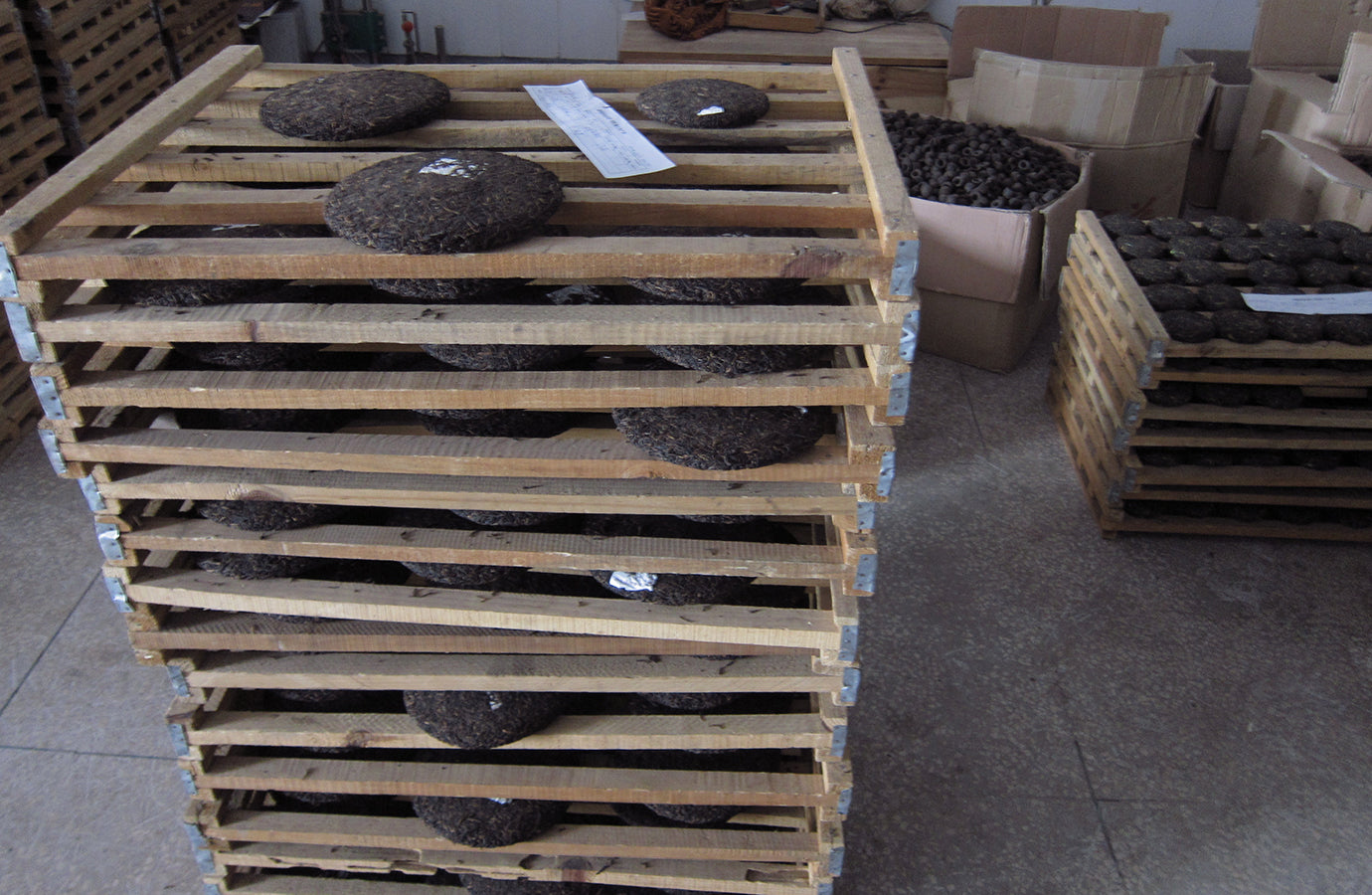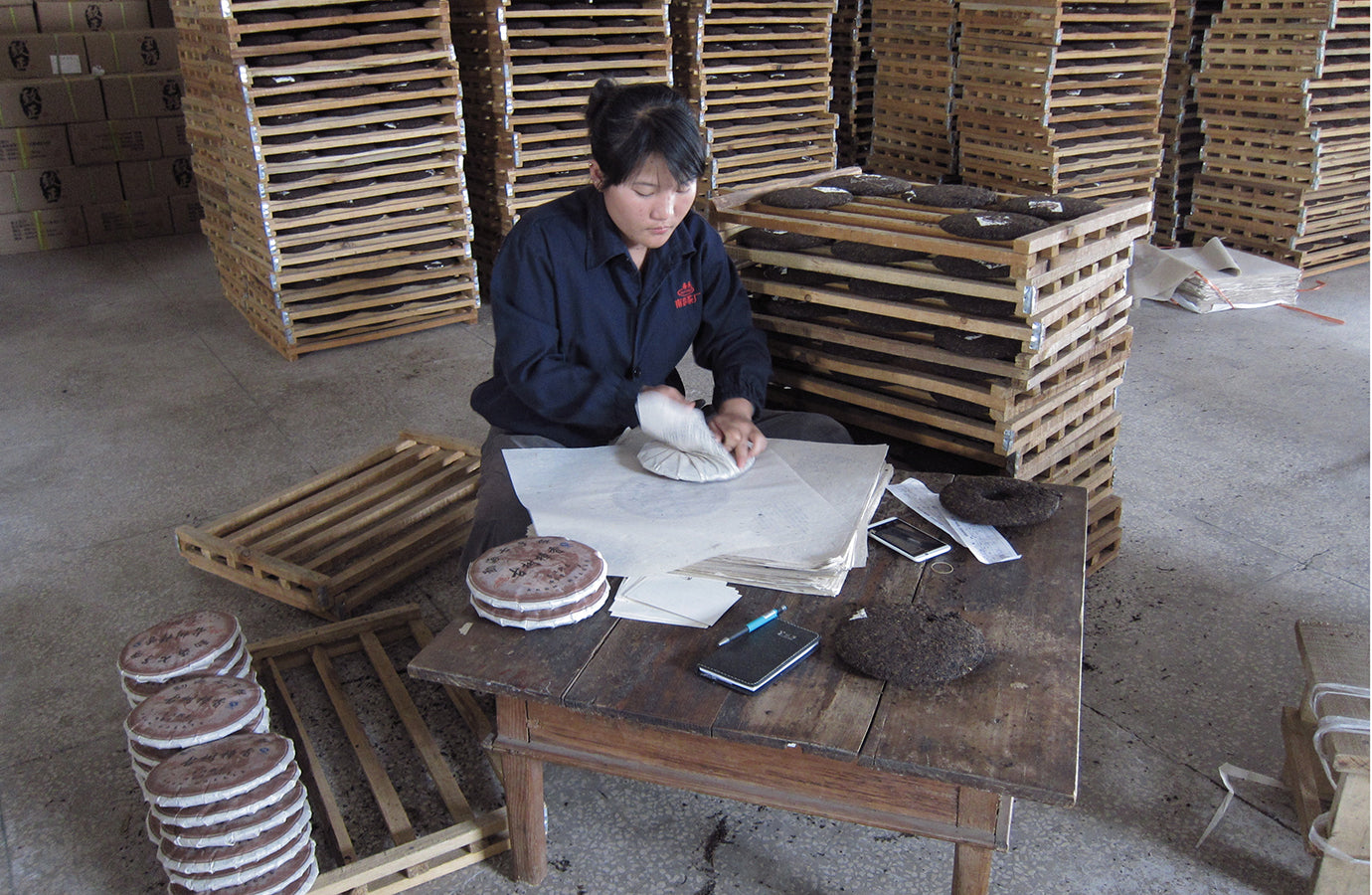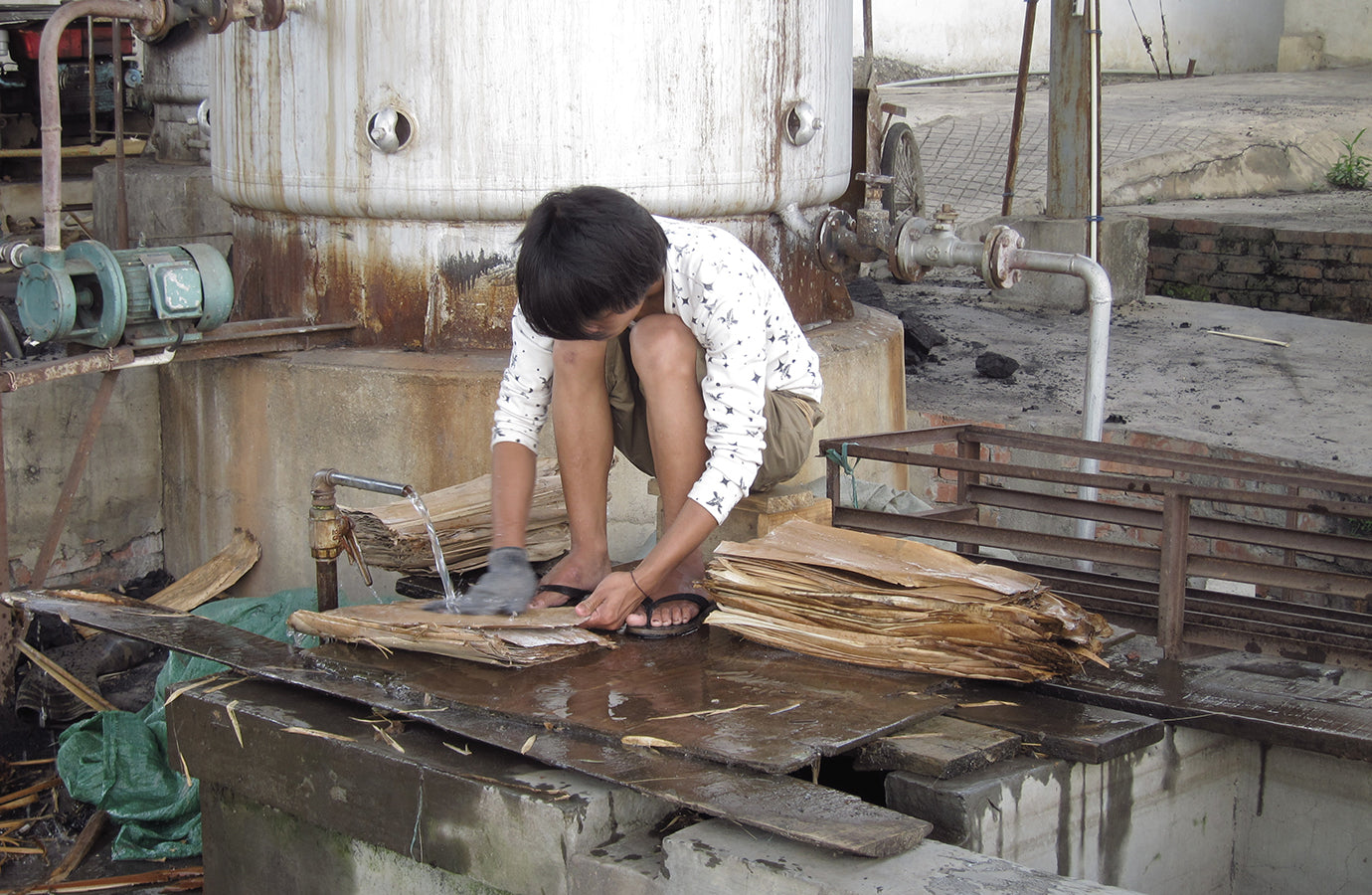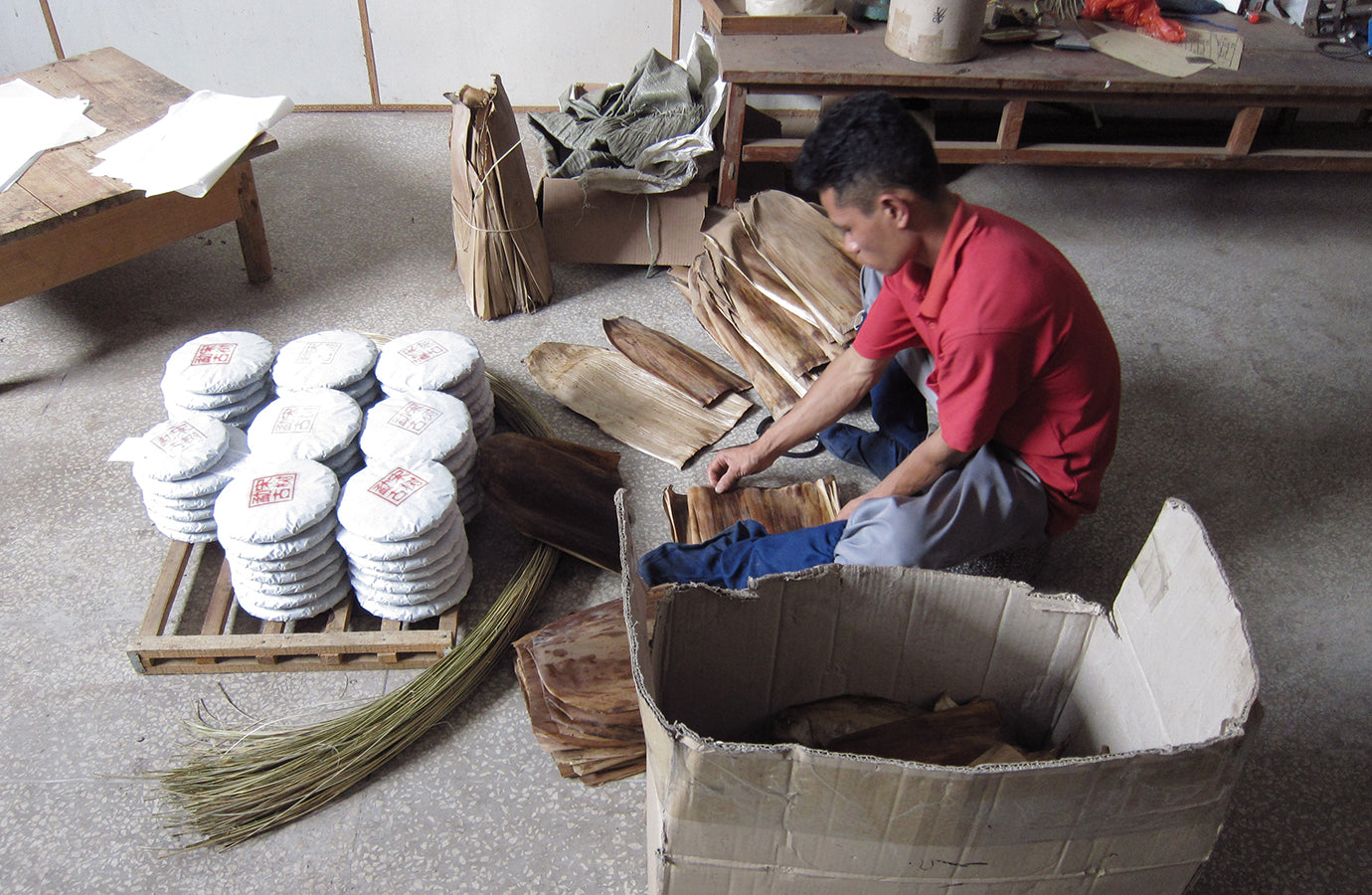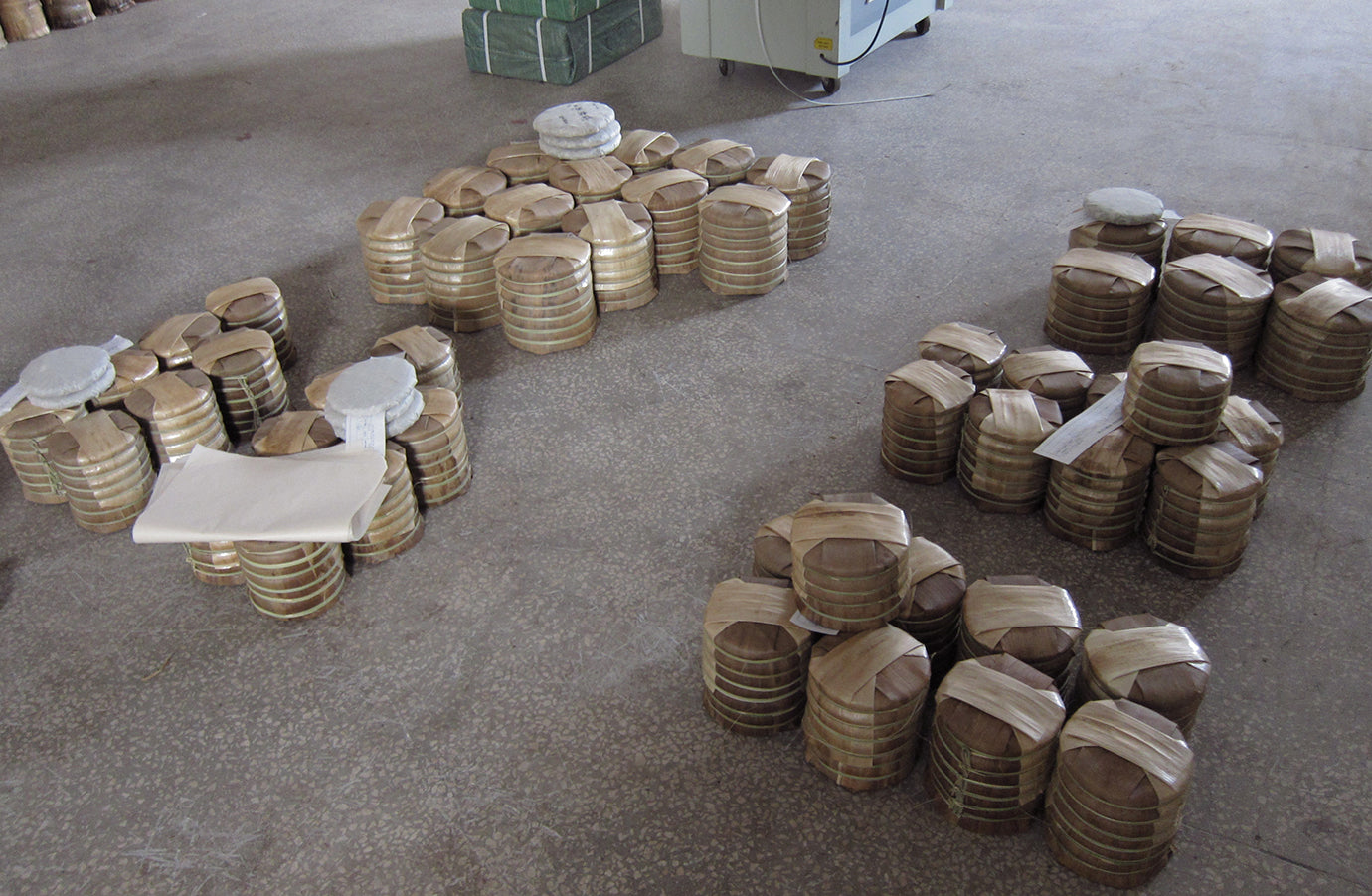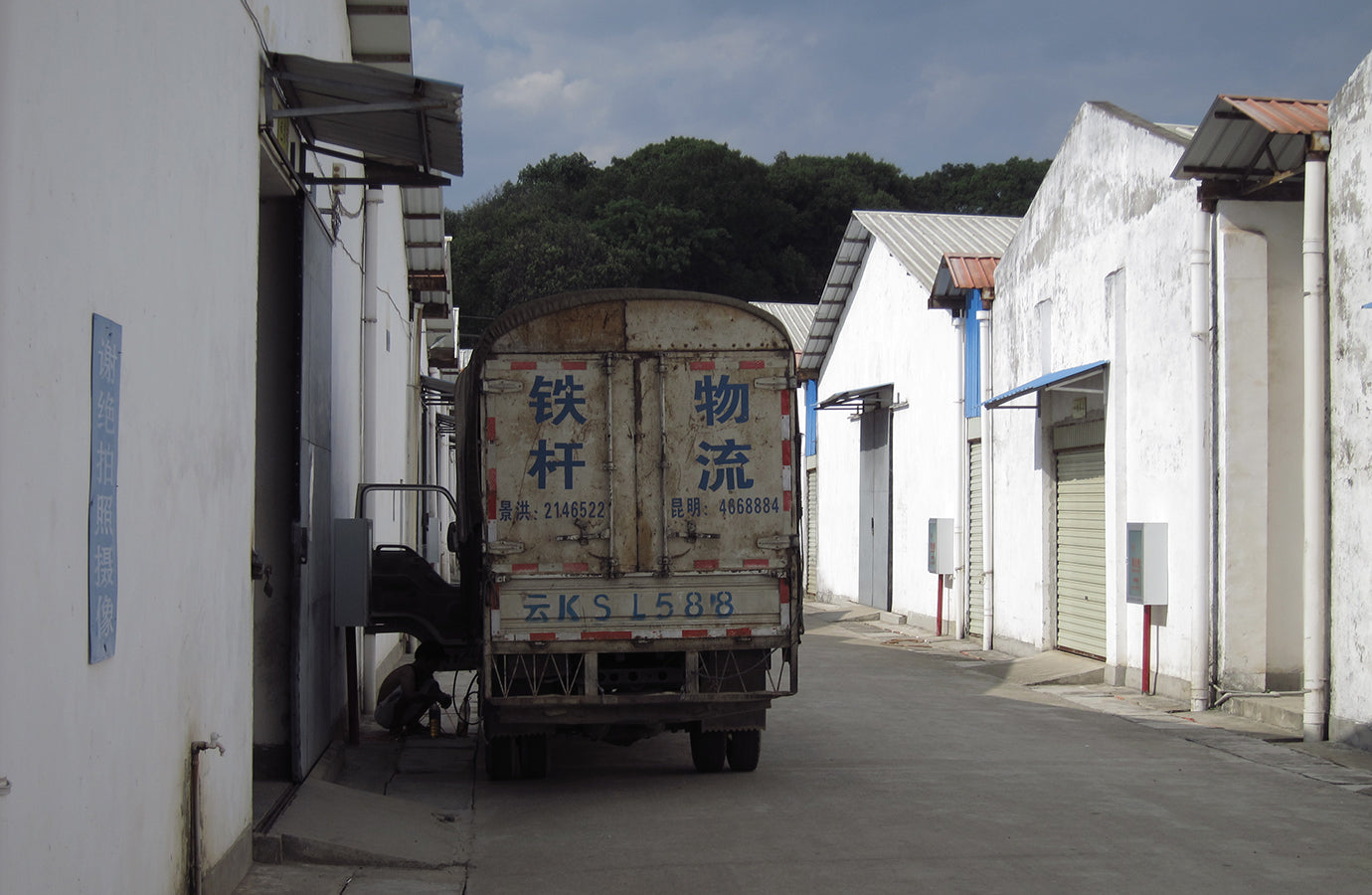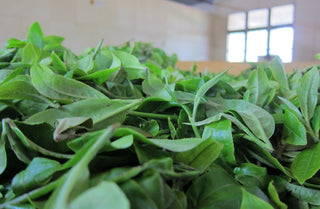
All about Puer tea
The first tea plants are said to be brought from
the borders of China, India and Burma. Today, every tea is plucked from
one of Cameli sinensis’ subgenus. The leaves are from bushes or trees,
that can be found both in small gardens, large plantations and even in
the wild. There are a few living trees which are approximately 2700
years old.
Small definition of puer tea
There are three details needed to have the right to call a tea puer:
- It has to originate from a certain region: Puer region, which is located in Yunnan province, China.
- The tea plant has to be of the Camelia Sinensis’ subspecies called, Assamica.
- The tea has to be sun-dried.
These are the basics in a nutshell, now we can move forward to tasting, gaining our own experience, which — for us — is the most important aspect of tea.
Areas
Similar to wine, every tea growing area has its own specific nature: soil, climate, types of tea. These differences can be witnessed when tasting teas. Every single detail is important and makes a difference: location, altitude, weather, type and thickness of soil, rainfall. For example: many times we experienced, that teas coming from southern areas are smoother, and have rounder, and sweeter taste. The ones coming from north have more freshness and longer, more balanced (after)taste.
When buying, or tasting tea it’s worth noting which area’s ambiance is the closer to us.
The tea growing areas are often divided into two major groups: old and new puer mountains.
In our selection there are teas from south: Mahei, Bada-Pasha, Nannuoshan and Jingmai, which is famous for its fragrant teas.
The most famous northern mountain is Da Xue Shan, which means Big Snowy Mountain.
On our website there’s a tea-map showing all the mountains and villages where we have teas from.
Tea plants
Based on size and growing area teas can originate from:
- plantations (taidi 台地) that are usually 5-30 years old. These plants are mostly propagated by cuttings therefore pest control and spraying is inevitable. Teas coming from plantations in most cases fall way behind from those listed below.
- smaller trees (qiaomu 乔木) found in small tea gardens; they are seedlings and 80-100 years old on average.
- big, old trees (gushu, 古树) found in gardens; their size is like a cherry tree’s and their age is at least 200 years old.
- wild growing, old trees trees (yesheng gushu, 野生古树) in tropical forests. Some of these are usable, however most of them are too wild to be processed.plantations (taidi 台地) that are usually 5-30 years old. These plants are mostly propagated by cuttings therefore pest control and spraying is inevitable. Teas coming from plantations in most cases fall way behind from those listed below.
Incubation process
This is one of the most interesting aspect of puer teas. In most cases the tea’s final character is formed by the end the process. However, besides old trees, puer teas’ characteristics is given by the maturing process; that is why these teas are often called post-fermented teas.
The air’s oxygen content is the most important cause of post-fermentation. Accessing oxygen, the leaves of sheng (生, or living) puer continue to ripen. During the maturing process, the teas’s flavour undergoes a major change: it turns from bitter to sweet, from rough to smooth, from from flowery scent to mature, fallen-leaf-like fragrance. Proper ageing can only be achieved with quality commodity, and contrary to the common belief it doesn’t improve low-quality teas.
When buying, and storing puers it is important to know the basics of tea ripening process. The flavour of a matured puer is due to certain microorganism living in the tea-laves. These, and other similar microorganisms are a key to produce many types of food and beverages, such as beer, wine, cheese, bread. During the process, the chemical structure of the leaves’ primal aromatic compounds transforms thus forming new, different kinds of compounds that before simply weren’t there. Anyone who wishes to drink puer regularly needs carefully-processed tea that can be matured well, all this on a decent price. In this case a professional’s help is almost crucial.
Shapes and taste
The sun-dried leaves are called maocha (毛茶, or raw tea). Based on long years’s experiences the teas are first steamed then pressed into certain forms in order to simplify shipping and storage. The tea can be stored either in maocha state or pressed, however in the first case the ripening will be way faster. There are a few special, frequently used forms: cake, brick, mushroom, or small balls only enough for a single brew. The biggest form is the dragon-egg, that can weigh as much as 3 kilograms.
When pressing the tea its destination too, is taken into account: those heading to more humid regions are pressed more firmly so that the tea will age slower.
Before brewing tea from a teacake it is lightly steamed in order to loosen the leaves, then with a special tea-knife the cake is horizontally opened (this way the leaves stay unbroken). When the cake is opened a small amounts of tea (5-6 gramms) can be separately brewed. A more detailed introduction to the completion can be found here.
Process of puer tea
Plucking, few hours of wilting, decomposition of enzymes, found in the leaves, by a minor baking process, rolling, sun-drying: these are the basic steps of sheng puer production. When making green tea, the heating process lasts 40-45 minutes and like this the enzymes completely decompose, however in puer tea’s case it’s only 12-15 minutes so that on the long run the tea can be matured.
There are two kinds of puer teas:
- Sheng (生, or living) puer. The leaves are processed in their original form, without any kinds of fermentation. We believe that these teas are the best when talking about chaqi (茶氣, tea energy) or the trees’ message, so on our website we simply call them puer teas.
- Shu (熟, or dark) puer, which is a postfermenred puer tea. The technique was developed in 1975: the maocha is spread across large nets, then lightly steamed, and isolated from air (either with foil or soil). The fermentation last about 40 days , then the leaves are dried.
Pressing of puer tea
The maocha wrapped in big sacks or boxes is sent for sorting. Then the separated leaves are weighed and pressed into cakes (usually 100, 375, or 400g). The pressing is mostly done with traditional methods: the leaves are steamed in small textile-bags then pressed with large stones designed specifically for this usage. After drying, the cakes are wrapped first in paper, then in banana-leaves in groups of five or seven.
How should we store our puer tea?
The method of storing you choose is dependant on your short and long term plans for that tea. As might be expected, aged Puer tea is more expensive than young tea because there is less supply and greater demand. Conversely, younger teas are less expensive as there is a greater supply.
Air circulation
Good air circulation ensures the proper health and reproduction of micro-organisms in the tea leaves which in turn, ensures the on-going processes that create the distinctive aromatic compounds one wants in an aged puer tea. If you wish to facilitate ageing in your puer tea, it is important for the tea to be exposed to fresh air, or the air be freshened periodically.
Stable temperature
Micro-organisms prefer a stable temperature environment to encourage reproduction. According to past experience, a temperature range between 20° to 30° C is ideal to maintain long term transformation of the leaves. Of equal importance is that temperature fluctuations occur slowly if one lives in a climate where the temperature shifts dramatically or often.
Appropriate humidity
Tea leaves are very good at absorbing moisture from the air. An appropriate level of humidity can assist the reproduction of micro-organisms and excessively low humidity hinders reproduction. Additionally, excessive high humidity and lack of air circulation can lead to the development of mould which can ruin the tea.
Light
Bright light slows micro-organic growth, so low light conditions are the most suitable for storing puer tea.
